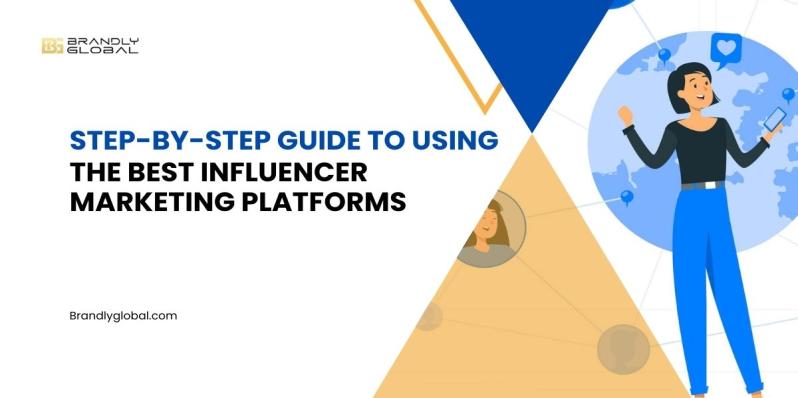Step-by-Step Guide to Using the Best Influencer Marketing Platforms
- admin's Blog
- Log in or register to post comments

Influencer marketing changed the dynamics between brands and customers. Rather than using traditional ad methods, more firms use influencers to disseminate their messages. But how exactly do brands make the most of finding the most suitable influencers, running campaigns, and measuring return on investment? That is where influencer marketing platforms enter. These platforms ease the process between businesses and influencers to work with each other and run campaigns.
What Are Influencer Marketing Platforms?
Influencer marketing platforms are online tools that help brands and marketers find, manage, and collaborate with influencers to promote products and services. These platforms streamline the entire process, from identifying the right influencers to analyzing campaign performance. For creators, it provides a marketplace to connect with brands that align with their audience.
Why Use Influencer Marketing Platforms?
There are numerous benefits to using these platforms, whether you’re a brand or an influencer:
- Efficient Campaign Management: Instead of spending hours manually searching for influencers, these platforms automate the process.
- Access to Data and Analytics: Brands can make data-driven decisions based on performance metrics and insights.
- Seamless Communication: Platforms allow for easy collaboration between brands and influencers, ensuring clear expectations.
- Increased Reach: By partnering with influencers, brands can tap into highly engaged audiences that traditional marketing might not reach.
How Influencer Marketing Platforms Work
These platforms serve as a bridge between brands and influencers, offering tools like:
- Search Engines for Influencers: Brands can filter by niche, audience demographics, and engagement rate to find the perfect match.
- Campaign Management: Some platforms provide tools for managing the entire campaign, from contracts to performance tracking.
- Payment and Contracts: They often handle influencer payments, making it easier for both sides to work together.
Choosing the Right Influencer Marketing Platform
With so many platforms available, selecting the right one can be overwhelming. Consider the following factors:
- Type of Influencers: Are you looking for micro-influencers, macro-influencers, or something in between? Choose a platform that specializes in your desired audience.
- Budget: Some platforms cater to high-end campaigns, while others are suitable for brands with smaller budgets.
- Analytics Tools: A good platform should provide detailed performance metrics to help you track the success of your campaign.
- Ease of Use: Opt for a platform that’s easy to navigate for both your team and the influencers.
Top Influencer Marketing Platforms in 2024
Here are some of the most popular platforms in 2024:
- AspireIQ
- Upfluence
- Traackr
- Influencity
- CreatorIQ
Step 1: Define Your Campaign Goals
Before you plunge into working with an influencer marketing platform, you have to know what you are looking for. Are you trying to raise brand awareness? Generate sales? Create engagement? Knowing what you are seeking will allow you to select the correct influencers and gauge success.
Step 2: Identify Your Target Audience
The next step is knowing who you want to reach. A well-defined audience ensures that your influencer marketing efforts will be effective. Most platforms allow you to filter influencers based on their audience demographics, such as age, location, and interests.
Step 3: Identify and Choose the Most Suitable Influencers
Once you identify your target audience, it's time to identify influencers who share your brand values. Influencer marketing platforms offer tools to assist you in finding influencers who possess the correct audience and engagement rates. Identify influencers who have real connections with their audience, not merely high follower numbers.
Step 4: Create Engaging Campaign Briefs
To make sure that your campaign goes as smoothly as possible, give influencers a clear and interesting brief. This should contain the goals of the campaign, key messages, and any special requirements (hashtags, posting times, etc.). The more detailed your brief, the more successful the outcome will be.
Step 5: Launching the Campaign
Once your influencers are on board, it’s time to launch. Most platforms provide tools for scheduling posts, tracking content, and managing the timeline. Make sure to engage with the influencer’s audience by responding to comments and questions.
Step 6: Monitor Campaign Performance
It's also important to keep track of the performance of your campaign. Influencer marketing platforms tend to have analytics tools for measuring things like impressions, engagement rate, and click-through rate.
Step 7: Analyzing and Optimizing Results
After the campaign is completed, analyze the data to assess what worked and what didn’t. Identify areas for improvement to optimize your next campaign. Influencer marketing is a learning process, so don’t be afraid to tweak your strategy over time.
Common Mistakes to Avoid on Influencer Platforms
- Not Setting Clear Goals: Without clear goals, you won’t know whether your campaign was successful.
- Choosing Influencers Based on Follower Count Alone: Engagement and audience relevance are more important than raw numbers.
- Poor Communication: Ensure that both the brand and influencers are on the same page regarding expectations and deliverables.
- Ignoring Analytics: Don’t just assume your campaign was successful; check the data to confirm it.
Conclusion
Influencer marketing platforms offer a powerful way for brands and influencers to collaborate effectively. By following this step-by-step guide, you can maximize the success of your campaigns and create meaningful partnerships. The key is to choose the right platform, set clear goals, and continuously optimize your strategy.
Read More :- 5 Reasons to Work with a Global Influencer Marketing Agency
